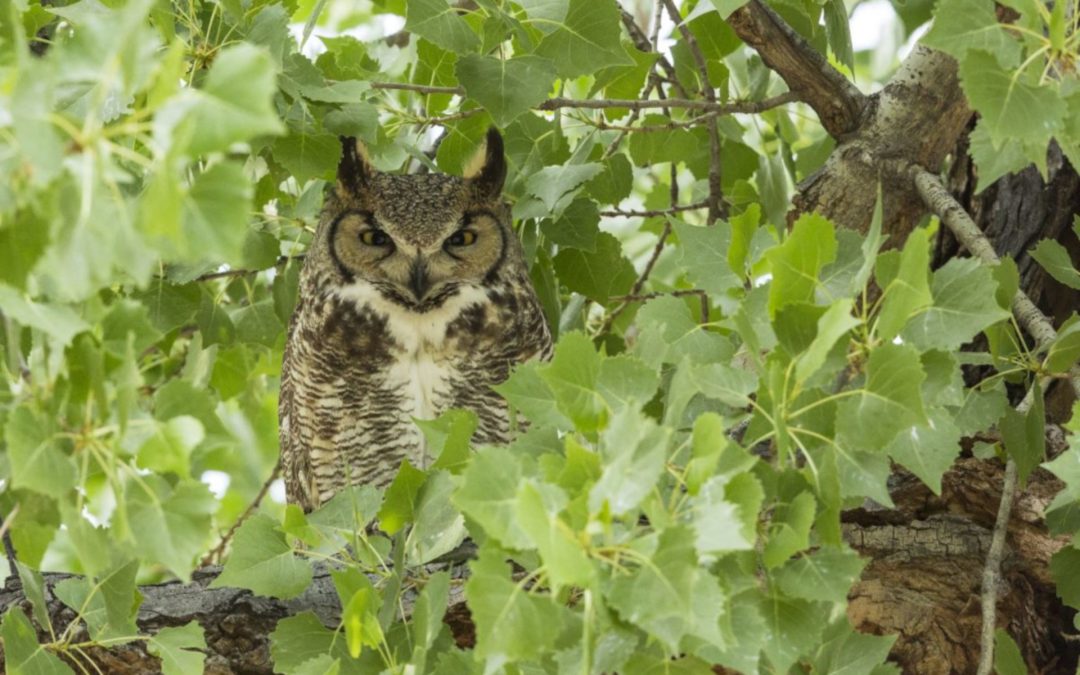The above photo of a Great Horned Owl in a Cottonwood tree is a great reminder that trees not only benefit urban settings by adding natural beauty, but provide habitat for wildlife. Surprisingly, these owls start nesting in our coldest month of the year, January, and hatch out 1 to 4 chicks in February. The number of eggs laid each year correlate with small mammal populations, their main prey. Owls and other birds of prey are valuable friends for communities with growing rat and rodent problems; keeping our trees healthy and pesticide-free invites raptors to nest in local areas where they can hunt. Woodpeckers are an example of one of our keystone species because the holes they create provide nesting sites for other birds like owls, and squirrels.
Snags are standing dead trees that look unsightly but play an important role in wildlife ecology. Snags can remain standing for many years while providing wildlife habitat – but they should be removed at the point they become unsafe. If the snag is tall, falling branches may be a concern. Topping a dead tree to a reasonable height may be one solution depending on its proximity to buildings or complete removal may be necessary if located on a small suburban lot. Call us for an on-site evaluation so we can discuss the best action to take when balancing the issues of safety vs wildlife habitat. What causes snags? Seasonal storms, construction/development activity, and lightning can kill trees but the most common cause of tree mortality is bark and limb injury, which opens the tree for insect attacks. The next time you are in one of our local parks or conservation lands and are wondering why these snags have not been removed, have a closer look and you may find a nest.

Human populations are rising, and as community development spreads further into wild forest territory, we need to become increasingly aware of preserving wildlife habitat. As we work together to preserve wild and cultivated trees, we will continue to enjoy many benefits – wildlife and birdwatching, shade and shelter for us from seasonal challenges, clean air to breathe, and the beauty they provide to our landscape.
If you have any questions or concerns about the trees on your property, including snags or other habitat trees, call the team at Pine Valley Tree Services & Landscaping.

